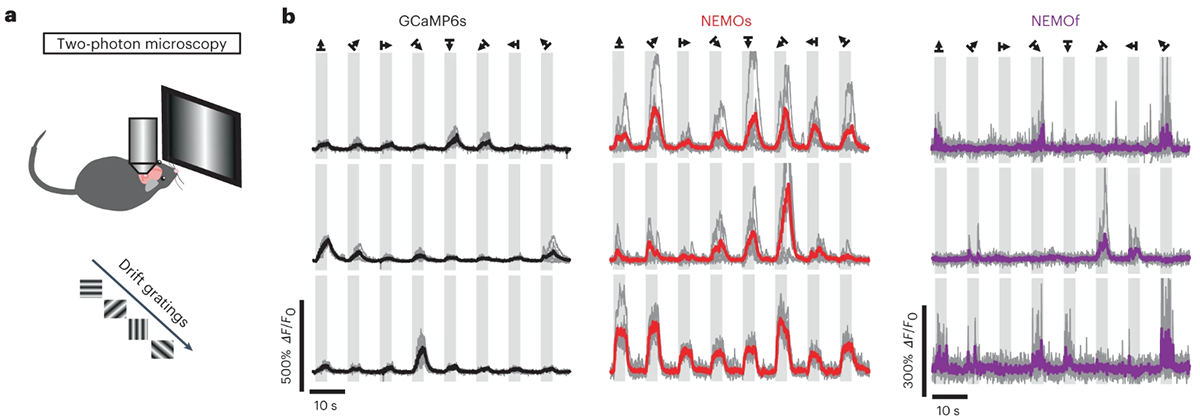Published in Nature Methods (2023)
Authors
Jia Li, Ziwei Shang, Jia-Hui Chen, Wenjia Gu, Li Yao, Xin Yang, Xiaowen Sun, Liuqing Wang, Tianlu Wang, Siyao Liu, Jiajing Li, Tingting Hou, Dajun Xing, Donald L Gill, Jiejie Li, Shi-Qiang Wang, Lijuan Hou, Yubin Zhou, Ai-Hui Tang, Xiaohui Zhang, Youjun Wang
Paper presented by Dr. Reinis Svarcbahs and selected by the NIDA TDI Paper of the Month Committee
Publication Brief Description
Current genetically encoded calcium indicators have suboptimal dynamic range and peak signal-to-baseline ratios. Li et al. engineered a new series of mNG-based calcium indicators (NEMO) that exhibit fast kinetics with up to 100-fold increase in dynamic range and 20-fold increase in signal-to-baseline ratios when NEMO sensors were compared to GCaMP6m or NCaMP7. When authors measured single action potentials in neurons in vivo using NEMO, median change in florescence was four and seven times larger when compared to the GCaMP6s and GCaMP6f, respectively. NEMO sensors showed greater photostability, resistance to pH fluctuations and compatibility with imaging of cyan fluorescence thereby providing more versatility. Increased fluorescence and dynamic range of NEMO should facilitate the in vivo monitoring of calcium changes in deep brain structures and cellular organelles.
Engineering of NEMO as calcium indicators with large dynamics and high sensitivity Journal Article
In: Nat Methods, vol. 20, no. 6, pp. 918–924, 2023, ISSN: 1548-7105.

